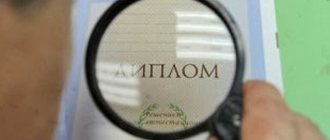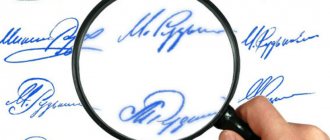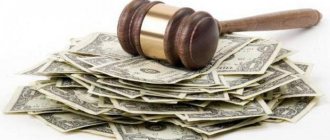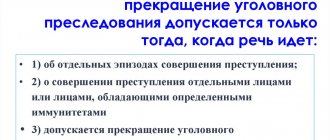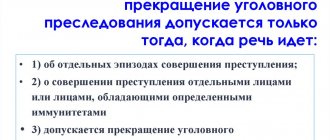Forging a signature is illegal, and therefore may result in administrative or criminal liability. But not in every case, the mere fact of falsifying an autograph will lead to the dock or allow the fraudster to be sent to jail. There must be good reasons for this, which lawyer Alexey Karabaev FAN .
From the personal archive of Alexey Karabaev /
What is signature falsification
There are different cases when one person signs documents for another. Situations can be quite harmless. For example, when a schoolchild copies a parent’s autograph in a diary so that the father does not see a bad mark. Or one employee signs for another when receiving a salary in the accounting department, because he has no time, but he comes to collect the money himself.
There are situations that are even more serious. For example, an accounting employee signs the chief accountant’s autograph on reporting documents for the tax office. At the same time, the manager is not notified about this, but simply sends reporting papers, because deadlines are running out, and the chief accountant has no time.
The peculiarity of these situations is that forging signatures on documents does not lead to any serious negative consequences. One fine day, the parents will still punish the student, the salary will reach the recipient, and the company’s accounting department will submit reports on time.
It’s another matter when an autograph is signed not for a good purpose, but in order to receive a certain benefit, most often material. Or the document has social importance, official status. Then the consequences of having a signature of a person who did not have the right and grounds to sign the paper will be different.
“The presence of a person’s signature on an official document gives it legal force,” comments lawyer Alexey Karabaev. “That’s why you can’t put someone else’s autograph on papers, no one has the right to do that.” According to the law, this is considered counterfeit and carries criminal penalties.”
pixabay.com/
Criminal liability
Any person over 16 years of age may be held liable for forgery of documents and their use. In this case, his criminal intent must be proven. For example, that the candidate submitted a falsified diploma to the personnel department in order to occupy a position for which his real qualifications are insufficient.
Criminal intent is considered to be obtaining privileges and benefits that are not due to a person, and evading responsibility. For example, if a young man of military age buys a military ID to avoid military service.
Types of forgery of an official's signature
Depending on how the falsification was carried out, two types are distinguished.
• Manual. The autograph is made by hand - without the use of any technical means. This can be done by a craftsman who has practiced a little copying his boss’s squiggle and even succeeded in this. It is easy to determine the fact of falsification in this case: often the perpetrator of the forgery does not bother to make it as similar as possible. And sometimes, although he tries, he cannot fully recreate the force of hand pressure, all the hooks and curls that are present in the original.
• Technical. A more complex type of falsification. Technical forgery of a signature implies the use of any auxiliary means. For example, first the autograph is drawn with a pencil, achieving maximum similarity, and then outlined with a pen. Or they use copy paper, which allows you to apply a contour as close as possible to the original and trace it with paste. In other cases, the original signature is pressed onto paper, after which it is drawn with a pen, or even printed on a laser printer, which makes the image almost indistinguishable from a hand stroke.
The manner in which the falsification was carried out matters only to the fraudster. By hand or on a printer, using carbon paper or by pressing - for law enforcement agencies and the judicial system it does not matter how the fake was made. The only consequences that matter are the consequences it entails.
pixabay.com/
How to detect a partial fake
Complete falsification of documents is extremely rare. As a rule, we are talking about a high quality counterfeit, which only a professional can recognize. Such papers are produced using professional equipment. Therefore, differences from the originals arise due to imperfect technologies, the use of other materials, etc.
Partial forgery is much more common. Here the changes may be minor, suggesting additional printing of words or even letters. We will talk about the most common methods of partial counterfeiting below.
Erasing
Erasure is the mechanical removal of graphic characters present on documents. The distinctive features of such an intervention are:
- disruption of the background grid;
- change in the surface layer of paper (especially noticeable on gloss), ruffled fibers);
- reducing paper thickness in areas of erasure;
- remnants of dye in the locations of the eliminated text;
- the smudged ink of the new text that was applied over the erasure.
Often, in order to disguise the erased area of the document, it is smoothed with a hard object. The lines of the background grid can be drawn on. In this case, the erasure can be detected by examining the document in oblique, diffuse, transmitted light or infrared rays. It is also possible to recognize a fake by using magnifying glasses and a microscope, which can reveal fiber breaks.
To restore the original text, a specialist can photograph invisible areas with filters in oblique light. It is also possible to use the diffuse-copy method.
Etching
This is the effect on printing ink through chemical reagents. To falsify documents in this way, various oxidizing agents, acids, and alkalis are used. As a result, the dye is either washed off or discolored. Chemical reagents have an effect not only on the text. The paper also suffers - changes are made to the background grid and other important details of the document.
The main signs of etching include:
- disappearance of gloss;
- the paper becomes rough;
- the shade of the sheet changes (borders and colored spots appear in places of etching);
- The color of the background grid changes;
- due to the violation of the paper sizing, the strokes of the new text become blurry;
- partial discoloration of records occurs because they are exposed to an etching substance that is partially preserved in the thickness of the paper;
- the sheet becomes brittle and fragile, tears and cracks may form on it;
- When viewed under ultraviolet rays, the luminescence of areas with etched text is noticeable.
To detect the presence of chemical etching, optical magnifying devices, oblique lighting, light filters, ultraviolet luminescence photography, etc. are used.
If dissolution was carried out by washing away, then barely visible remnants of the original text will be present on this section of paper. In this case, their general coloring is observed.
To restore etched text, the document is photographed in the infrared and ultraviolet zones of the spectrum.
Additional printing and addition
Reprinting is the addition of new characters, words or part of typewritten text. Adding is adding characters, letters, words or parts of text manually. In most cases, such changes are small in scope, but they can significantly distort the meaning of the original text. Most often, by adding numbers or words, the amounts in statements, receipts and invoices are changed. Last names, dates of paperwork, etc. can also be falsified.
The addition can be identified by the following signs:
- the symmetry of the text is broken;
- general and specific features of handwriting in the compared parts of the text are different;
- the possibility of blurriness of those strokes that were made along the folds of the document, differences in color shades, etc.
You can identify an overprint by the following signs:
- differences in defects in the mechanism and font are noticeable if additional printing was done using another typewriter;
- the horizontal position of printed characters in a line does not match;
- when examined under ultraviolet rays, different luminescence of signs in original and pre-printed details is noticeable;
- difference in the design and size of identical printed characters, differences in the color of the ribbon dye.
It is more difficult to detect a fake if the text was printed on the same machine. Then the experts check the intensity of the dye in the strokes, the matches between the lines of the main and pre-printed text, etc.
Have a question for a lawyer? Ask now, call and get a free consultation from leading lawyers in your city. We will answer your questions quickly and try to help with your specific case.
Telephone in Moscow and the Moscow region: +7
Phone in St. Petersburg and Leningrad region: +7
Free hotline throughout Russia: 8 (800) 301-39-20
Text correction
We are talking about partial changes in documents by converting some characters into others. You can recognize a correction by thickened strokes, double lines, and the presence of extra elements that remain from the previous sign. In some cases, these elements are erased, which entails the appearance of signs of erasure.
To identify text corrections, additional printing and additions, specialists use light filters, magnifying devices, and examine the chemical composition of dyes through chromatography and spectral analysis.
Replacing parts of a document
This type of forgery is used in ID cards. We are talking about passports, military IDs, work books. The following signs indicate a fake:
- the page numbering is incorrect;
- in places where sheets are fastened, the integrity of the paper layer is damaged;
- discrepancy between the number and series of the document, differences in page sizes;
- different luminescence of dye and paper;
- In the text fragments there is a noticeable discrepancy between the methods and types of printing.
The most common way to replace part of a document is to re-stick a photo card. The photograph is changed in passports, driver's licenses, etc. Replacement can be done either entirely or with the removal of the emulsion layer. When a photo is pasted in, the missing parts of the metal or mastic seal are added using pressure or additional drawing.
The following evidence indicates that the photograph has been pasted together:
- discrepancy between the letters of the text in the seal imprint and the document paper (different design, size of letters);
- peeling of the surface layer is observed at the edges of the paper;
- the photo card is pasted with an offset;
- two different types of glue were found under the photo;
- non-standard size, scale violations, etc.
Some documents are modified by pasting in fragments of the same papers. Such actions are performed with the aim of changing the number or series. We are talking about counterfeiting bonds, lottery tickets, and securities.
You can identify a fake by the following signs:
- unevenness of fiber disintegration and sheet thickness;
- differences in color and shade;
- there are traces of glue along the edges of the insert;
- There is a noticeable discrepancy between the lines of the background grid.
To identify a fake, a microscope and a UV lamp are used.
Forgery of signatures
Most often, criminals copy signatures from documents or resort to graphic copying technology. However, the most experienced fraudsters are capable of technical counterfeiting. It is performed in the following ways:
- squeezing;
- use of carbon paper;
- wet copying;
- using a printer;
- redrawing in the light.
Squeezing, redrawing against the light and using carbon paper are the simplest methods of counterfeiting. They are similar to each other and involve a repetition of the lines with which the original was made. You can detect such a fake by using a magnifying glass with low magnification. You should pay attention to the following signs:
- the presence of strokes of copy paper;
- kinks, tortuosity of individual strokes, underdrawing, unjustified stops of the writing medium;
- depressed strokes not covered with dye;
- traces of preliminary pencil preparation, if the forgery was made by copying against the light.
Wet copying technology involves transferring the dye of a genuine signature onto a fake document. For this, a special sticky material is used. It is pressed against a document with a genuine signature, after which the mirror image is copied onto the forged document.
Such a fake can be recognized by examining the signature under a microscope. In this case, changes in the structure are observed: unclear edges, low intensity of the dye, etc. If the signature was additionally circled, then traces of two dyes can be seen on the paper.
Article of the Criminal Code of the Russian Federation for forgery of a signature
“The Criminal Code does not mention a false signature,” says lawyer Alexey Karabaev. — But there are several articles when a citizen can be held accountable for falsifying documents: official and electoral. Forgery of official papers, as well as their purchase and sale, is punishable by law.”
Here are several articles that provide punishment for forging signatures on official documents. The degree of responsibility in them is directly proportional to the consequences that the unlawful act entailed.
► Article 142. Provides punishment for falsifying documents of election campaigns and referendums. It is obvious that the crime has serious consequences, since it affects the constitutional rights of citizens, general political processes in the country and subordinates the public will to the will of one person or group of people. This article provides for severe punishment: a fine of up to half a million rubles, a prison term or correctional labor for up to four years. The fraudster will be prohibited from holding leadership positions for five years.
► Article 233. Applies to situations where a person imitates a doctor’s signature on a prescription. Such an act also has negative consequences. For example, the clandestine sale of narcotic drugs, which can only be purchased in pharmacies with a prescription, poses a serious public danger. The provision of essential medicines to people who do not have the right to receive them and who use their official position for personal enrichment has a negative impact on the life of society. This article also provides for a period for forging a signature. According to it, they can be imprisoned for two years, assigned the same period of forced labor, a year of correctional labor or a large fine.
► Article 327. Provides for liability not so much for forging signatures on documents, but for the production of fake documents, as well as their circulation, that is, their use. The production of blank passports or certificates, stamps and seals, that is, those papers that have the force of official documents, is considered illegal. This is punishable by up to two years in prison.
“Forgery of a signature as such does not provide for punishment,” comments Alexey Karabaev. — There are no provisions in the Criminal Code that introduce any restrictions simply for the fact of falsification. It becomes a crime only if several circumstances coincide. It matters what kind of paper the counterfeit was made of. What matters is why the paper was made and who made it. And it is especially important what consequences the falsification entailed.”
Only the study and analysis of all these points makes it possible to qualify an act under any criminal article or several at once.
pixabay.com/
Rules of law
As a rule, illegally signing papers is only part of the crime. Therefore, below we will provide a list of articles related to this fact.
| Article of the Criminal Code of the Russian Federation | Items | Type of punishment |
| Art. 142 “Falsification of election documents, referendum documents” | Forgery of election documents and voting documents by a member of the election commission or an authorized person, or a candidate. |
|
| Affixing or witnessing false signatures of participants in the voting or electoral process and influencing the decision to nominate a candidate or lists of candidates. The review also takes into account facts of pressure, intimidation or violence, corrupt practices, damage to property or threats to damage property. |
| |
| Illegal storage, transportation or production of voting documents. |
| |
| Art. 292 "Official forgery" | Entry into documents by an official, authorized or private person of knowingly false information or corrections due to selfish or personal motives. |
|
The same unlawful actions, which entailed, among other things, significant non-compliance:
|
| |
| Art. 292 part 1 “Illegal issuance of a Russian Federation passport, or entering false information into documents that led to the issuance of a passport” | Participation in illegal activities that led to the receipt of a Russian passport or Russian citizenship by a person who is not one. |
|
| Unfair attitude towards work by a civil servant, as a result of which citizenship or a passport of the Russian Federation was issued to a foreign person. |
| |
| Art. 332 hours 3 | Illegal registration of a foreign person at the place of residence in the Russian Federation. |
|
| Art. 324 “Acquisition or sale of official documents” |
| |
| Art. 325 “Misappropriation or damage of official documents” | Theft of official documents for profit. |
|
| Theft of personal documents of a citizen of the Russian Federation. |
| |
| Assignment of brands or marks of conformity. |
| |
| Art. 327 “Falsification, sale or sale of fictitious documents” | Forgery of a document that allows one to obtain additional rights or relieve oneself from obligations. This implies both the fact of production for personal use and an attempt to sell. |
|
| Making false documents to avoid liability for another illegal act or to facilitate its commission. | Compulsory labor or imprisonment for up to 4 years. | |
| Use of obviously false documents. |
|
What is the penalty for forging a signature in Russia?
Most civil transactions in which fake documents and forged signatures may be used fall under Article 327 of the Criminal Code. It introduces penalties for signature forgery:
• in the purchase and sale agreement;
• statement;
• minutes of the owners' meeting;
• PTS and other documents having legal force.
The maximum penalty under the article is two years in prison. But even if the fact of falsification is established, liability can only occur if three factors are combined:
1. The document was official.
2. The person who made the fake received certain duties or, on the contrary, was released from them.
3. The person used or tried to use these papers to achieve some purpose, rather than simply putting them on the table.
“There is another element of crime in which forgery of a signature will be assessed differently,” says lawyer Alexey Karabaev. — In a criminal trial, when the parties prove their case, there is a high probability of providing falsified evidence. It is extremely undesirable and dangerous, as it can lead to an unjust judicial decision. Article 303 of the Criminal Code is aimed at preventing signature forgery in judicial practice, which provides for severe punishment - imprisonment for up to seven years.”
pixabay.com/
What are fake licenses?
There are three types of fake driver's licenses:
- Cheap, without any signs of protection. Even an inexperienced traffic police officer is able to recognize a fake. When creating it, the passport data of the person who will use it is used.
- More expensive ones, called “mirror” rights. They have the main features of protection. To make duplicates, they take the data of another driver, which the customer provided himself, or the scammers found them in the traffic police information database.
- Premium certificate. Real, unused, ill-gotten IDs apply. In such cases, it cannot be done without the participation of dishonest government officials.
Note!
Whatever the quality of fake licenses, they have a serious drawback - the lack of registration in the traffic police database. Most traffic police crews are equipped with laptops or tablets; it won’t be difficult for them to check you using a validator and detect fraud. Even “mirror” fakes will not save you, since the traffic police website has a photo of their real owner.
Do you have any questions?
To get the most detailed advice on your issue, you just need to follow any of the suggested options:
- Request a consultation using the form
on our website - Or just call the number: 8 800 350-83-74
Where to contact if a signature forgery is detected
You can encounter the fact of falsification in various life situations: when buying real estate or a car, when working with contractors, in the activities of an enterprise. If the act leads to negative consequences, the victim must contact the police. It does not matter who exactly made the fake - an ordinary citizen or an official. A person can be held accountable under the articles of the Criminal Code from the age of 16, only the articles for citizens and persons on duty will differ.
A way to clarify the fact of falsification would be to conduct a handwriting study - an examination. If during the research the fact is confirmed and it is accompanied by the three factors mentioned above, this will become the basis for initiating a criminal case for forgery of a signature.
“In most cases, a prison sentence is unlikely,” notes Aleksey Karabaev. — Because the crime is of minor gravity. But if it is committed again or the person has already received a suspended sentence, or he has an outstanding criminal record, then the court may impose real imprisonment.”
Cases of forgery of signatures of a notary, a judge, other officials, as well as security service IDs will be considered with partiality. In these cases, you should expect a harsh sentence.
pixabay.com/
Fine for driving with a fake license
Criminal prosecution does not exempt from administrative punishment. Driving a vehicle with a fake driver's license is equivalent to driving without a license, therefore you will have to bear responsibility for violating the law:
- if you have never had a certificate, the court may order you to pay a fine in the amount of 5 to 15 thousand rubles;
- If you were previously deprived of the right to drive a car and were caught with a fake, then you face: a fine in the amount of 30 thousand rubles, arrest for a period not exceeding 15 days, or compulsory work for a period of 100 to 200 hours.
If a driver is found to have a fake license, a traffic police officer will detain him until the circumstances are clarified, and the car will be sent to an impound lot. Then you will have to pay a considerable amount to return the vehicle back.
How to declare falsification in court
Only a court can recognize a signature as a forgery, and the injured party will have to look for evidence of this. When declaring the fact of falsification, the victim must provide evidence - the document itself with a forged autograph or a copy of it, witness statements or other evidence.
Moreover, if the examination has not been carried out previously, the plaintiff must file a petition for its conduct. The initiative may be taken by the court, which will order a handwriting study, and you need to be prepared for this in order to approve or reject the expert proposed by the court. It is important that the examination is carried out by an independent specialist with an impeccable reputation, otherwise there is a high probability that the fact of fraud will not be officially confirmed.
In addition, the court must state what consequences the defendant’s fraudulent actions entailed. After all, it is important not so much to prove that there is a fake signature on a particular piece of paper, but to have it declared invalid and cancel the consequences of the forged document - to return the rights to property, funds, and compensate for expenses. Therefore, despite the apparent simplicity of the matter, you should contact law enforcement agencies, and especially the court, on the issue of recognizing a signature as false only after consulting an experienced lawyer.
What to do if your license is revoked
Considering that driving a car with a fake driver's license can lead to jail time, there is no need to buy a license. It seems that it is better to just drive without them, then you can only get away with a fine. But keep in mind that it is planned to amend the legislation of the Russian Federation, according to which repeated arrest for driving a car without a license will be considered a criminal offense, and real sentences will be assigned for it.
The most acceptable option is to contact an experienced auto lawyer. If you were deprived of your rights illegally, he will definitely discover this fact and defend your interests in court. When the punishment is quite fair, he will make every effort to reduce it.
Note!
Offering a traffic police officer a bribe is not an option. If he turns out to be a conscientious servant of the law and reports the incident, the punishment will be even more severe.
